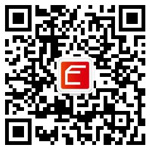
Sino Biological/RANKL Protein, Human, Recombinant/1/11682-HNCH
商品编号:
11682-HNCH
品牌:
sinobiological
市场价:
¥0.00
美元价:
0.00
联系Q Q:
3392242852
电话号码:
4000-520-616
电子邮箱:
info@ebiomall.com
商品介绍
RANKL Protein, Human, Recombinant: Product Information
Purity
> 85 % as determined by SDS-PAGE
Endotoxin
< 1.0="" eu="" per="" μg="" of="" the="" protein="" as="" determined="" by="" the="" lal="">
Activity
1. Immobilized human TNFSF11 (Cat: 11682-HNCH)at 2 μg/ml (100 μl/well) can bind biotinylated human TNFRSF11B-His (Cat: 10271-H08H), The EC50 of biotinylated human TNFRSF11B-His (Cat: 10271-H08H) is 60-230 ng/ml.2. The bioactivity of hRANKL was determined by measuring the ability of hRANKL to induce TRAP activity in Raw 264.7 cells. The ED50 for this effect is typically 1.5-7.5 ng/mL.
Protein Construction
A DNA sequence encoding the human TNFSF11 (AAC51762.1) (Gly64-Asp245) was expressed.
Accession#
AAC51762.1
Expressed Host
HEK293 Cells
Species
Human
Predicted N Terminal
Gly 64
Molecule Mass
The recombinant human TNFSF11 consists of 182 amino acids and has a calculated molecular mass of 20.5 kDa. In SDS-PAGE under reducing conditions, the apparent molecular mass of the protein is approximately 27 kDa due to the glycosylation.
Formulation
Lyophilized from sterile PBS, pH 7.4Please contact us for any concerns or special requirements. Normally 5 % - 8 % trehalose, mannitol and 0.01% Tween80 are added as protectants before lyophilization.
Please refer to the specific buffer information in the hard copy of CoA.
Shipping
In general, recombinant proteins are provided as lyophilized powder which are shipped at ambient temperature.Bulk packages of recombinant proteins are provided as frozen liquid. They are shipped out with blue ice unless customers require otherwise.
Stability & Storage
Samples are stable for up to twelve months from date of receipt at -20℃ to -80℃Store it under sterile conditions at -20℃ to -80℃. It is recommended that the protein be aliquoted for optimal storage. Avoid repeated freeze-thaw cycles.
Reconstitution
A hardcopy of COA with reconstitution instruction is sent along with the products. Please refer to it for detailed information.
RANKL Protein, Human, Recombinant: Images


Immobilized human TNFSF11 (Cat: 11682-HNCH)at 2 μg/ml (100 μl/well) can bind biotinylated human TNFRSF11B-His (Cat: 10271-H08H), The EC50 of biotinylated human TNFRSF11B-His (Cat: 10271-H08H) is 60-230 ng/ml.
RANKL Protein, Human, Recombinant: Synonyms
CD254 Protein, Human; hRANKL2 Protein, Human; ODF Protein, Human; OPGL Protein, Human; OPTB2 Protein, Human; RANKL Protein, Human; sOdf Protein, Human; TRANCE Protein, Human
RANKL Background Information
Tumor necrosis factor ligand superfamily member 11, also known as Receptor activator of nuclear factor kappa-B ligand, Osteoprotegerin ligand, TNFSF11, RANKL, TRANCE, OPGL and CD254, is a single-pass type II membrane protein that belongs to the tumor necrosis factor family. The receptor activator of nuclear factor-kappaB ligand (RANKL), its cognate receptor RANK, and its natural decoy receptor osteoprotegerin have been identified as the final effector molecules of osteoclastic bone resorption. RANK and RANKL are key regulators of bone remodeling and regulate T cell/dendritic cell communications, and lymph node formation. Moreover, RANKL and RANK are expressed in mammary gland epithelial cells and control the development of a lactating mammary gland during pregnancy. Genetically, RANKL and RANK are essential for the development and activation of osteoclasts and bone loss in response to virtually all triggers tested. Inhibition of RANKL function via the natural decoy receptor osteoprotegerin (OPG, TNFRSF11B) prevents bone loss in postmenopausal osteoporosis and cancer metastases. Importantly, RANKL appears to be the pathogenetic principle that causes bone and cartilage destruction in arthritis. RANK-RANKL signaling not only activates a variety of downstream signaling pathways required for osteoclast development, but crosstalk with other signaling pathways also fine-tunes bone homeostasis both in normal physiology and disease. In addition, RANKL and RANK have essential roles in lymph node formation, establishment of the thymic microenvironment, and development of a lactating mammary gland during pregnancy.
- Cancer Immunotherapy
- Immune Checkpoint
- Immunotherapy
- Targeted Therapy
Full Name
tumor necrosis factor (ligand) superfamily, member 11
Research Areas
- Cancer Drug Targets
References
- Takayanagi H, et al. (2002) Signaling crosstalk between RANKL and interferons in osteoclast differentiation. Arthritis Res. 4 Suppl 3: S227-32.
- Nakashima T, et al. (2003) RANKL and RANK as novel therapeutic targets for arthritis. Curr Opin Rheumatol. 15(3): 280-7.
- Schwarz EM, et al. (2007) Clinical development of anti-RANKL therapy. Arthritis Res Ther. 9 Suppl 1: S7.
- Leibbrandt A, et al. (2008) RANK/RANKL: regulators of immune responses and bone physiology. Ann N Y Acad Sci. 1143: 123-50.
Human RANKL Proteins
- RANKL Protein, Human, Recombinant (hFc Tag)11682-H01H
- RANKL Protein, Human, Recombinant (rFc Tag)11682-H15H
- RANKL Protein, Human, Recombinant (mFc Tag)11682-H04H
Mouse RANKL Proteins
- RANKL Protein, Mouse, Recombinant (hFc Tag)50343-M01H
Cynomolgus RANKL Proteins
- RANKL Protein, Cynomolgus, Recombinant (hFc Tag)90301-C01H
- Factors that Affect the Osteoclastogenesis of RAW264.7 CellsAuthorNguyen, J;Nohe, A;Year2017JournalJ Biochem Anal StudApplicationcell-basedPubMed ID: 30123890FoldedExpand
- A Synthetic Peptide, CK2.3, Inhibits RANKL-Induced Osteoclastogenesis through BMPRIa and ERK Signaling PathwayAuthorNguyen, J;Kelly, S;Wood, R;Heubel, B;Nohe, A;Year2020JournalJ Dev BiolApplicationcell culturePubMed ID: 32660129FoldedExpand
If you couldn"t find the specific citation, you can:
- Find All Citations
- Submit a CitationGet a Publication Reward
- Leave Us a Message
E.coli protein expression service
Mammalian transient protein expression service
Baculovirus-insect expression service
Stable cell line development service (CHO / HEK293)
品牌介绍
北京义翘神州科技股份有限公司(Sino Biological Inc.)是一家从事生物试剂研发、生产、销售并提供技术服务的生物科技公司,主要业务包括重组蛋白、抗体、基因和培养基等产品,以及重组蛋白、抗体的开发和生物分析检测等服务。义翘神州为全球的药品研发企业和生命科学研究机构提供高质量的生物试剂产品和高水平的技术服务。公司目前生产和销售的现货产品种类超过 4.6 万种,其中重组蛋白约 6,000 种,包括超过 3,800 种人源细胞表达重组蛋白产品,能够全面满足客户对于最接近人体天然蛋白结构和性质的重组蛋白需求;公司还能提供约 12,000 种抗体,其中单克隆抗体数量约 4,600 种,能够覆盖生命科学研究的多个领域,为分子生物学、细胞生物学、免疫学、发育生物学、干细胞研究等基础科研方向和创新药物研发提供「一站式」生物试剂产品和技术服务。义翘神州的客户涵盖大学、科研院所、医药研发企业等国内外各类生物研发单位。目前公司已经在美国、欧洲建立了子公司,已成为生物试剂行业国内领先的科技公司之一。
联络我们



